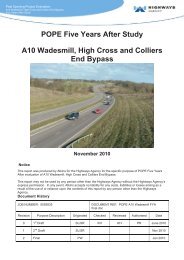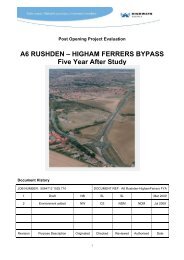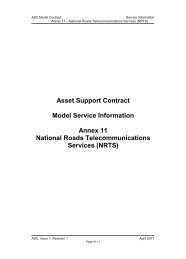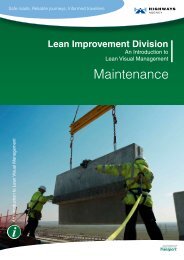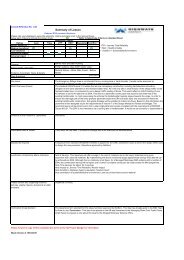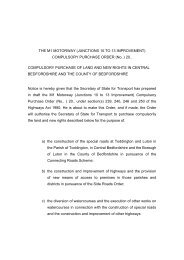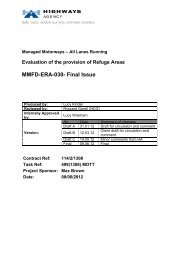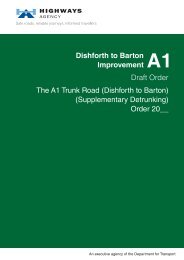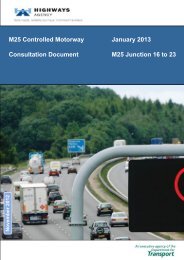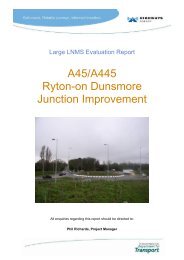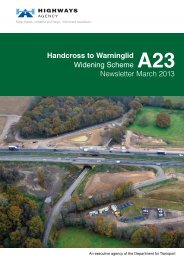A1(T) Elkesley Junction Improvements - Highways Agency
A1(T) Elkesley Junction Improvements - Highways Agency
A1(T) Elkesley Junction Improvements - Highways Agency
Create successful ePaper yourself
Turn your PDF publications into a flip-book with our unique Google optimized e-Paper software.
9 Noise and Vibration9.1 IntroductionNoise Assessment of the potential impacts associated with Stage 3 of the proposed<strong>A1</strong>(T) <strong>Elkesley</strong> <strong>Junction</strong> <strong>Improvements</strong> Scheme has been carried out for both theconstruction phase and following the opening of the scheme.The Preferred Option consists of construction of a two-level junction and local roadlinks to improve access to <strong>Elkesley</strong> and the closure of gaps in the central reservationin order to improve safety.The potential impacts of the proposed improvement are:• Changes in traffic noise levels due to the alterations to the <strong>A1</strong>(T), in particularthose arising from a proposed reinstatement of the 70mph national speed limiton the <strong>A1</strong>(T); and• Noise and vibration impacts during the construction phase.The assessment of any potential traffic noise impacts associated with the proposedscheme have been assessed in accordance with the methodology described withinVolume 11, Section 3, Part 7 of the Design Manual for Roads and Bridges HA213/08(DMRB).As demonstrated within the scope of the noise and vibration assessment presentedbelow the assessment was only required to be undertaken to a DMRB HA213/08“Simple Level”. This was as a direct result of the nature of the scheme, the results ofthe noise assessment and the methodology of the DMRB assessment. However, inorder to present a more robust assessment of the scheme the acoustic worksundertaken go above and beyond those normally required for a “Simple Level”assessment.Noise TerminologyBefore presenting the assessment of the potential noise impacts of the proposedscheme, it is considered useful to provide some background information on noise,the units of measurement and perception of changing levels by the human ear.Noise is defined as unwanted sound and is measured in units referred to as decibels(dB). The decibel is a logarithmic measure of sound pressure i.e. the magnitude ofthe pressure vibrations in the air. The audible range of sound pressure levels isknown to be between 0 dB (the threshold of hearing) to 120 dB (the threshold ofpain).The scale of sound pressure levels is logarithmic in order to account for the responseof the human hearing system to changes in noise level, which is also logarithmicrather than linear in response. A subjective impression of a doubling of loudness isrepresented by a 10 fold increase in the sound pressure level. This equates to anincrease of 3 dB. It is considered that the general public will not detect a change innoise level less than 1 dB under normal conditions and 3dB is usually considered asthe minimum perceptible change in noise level, again under normal conditions.64



